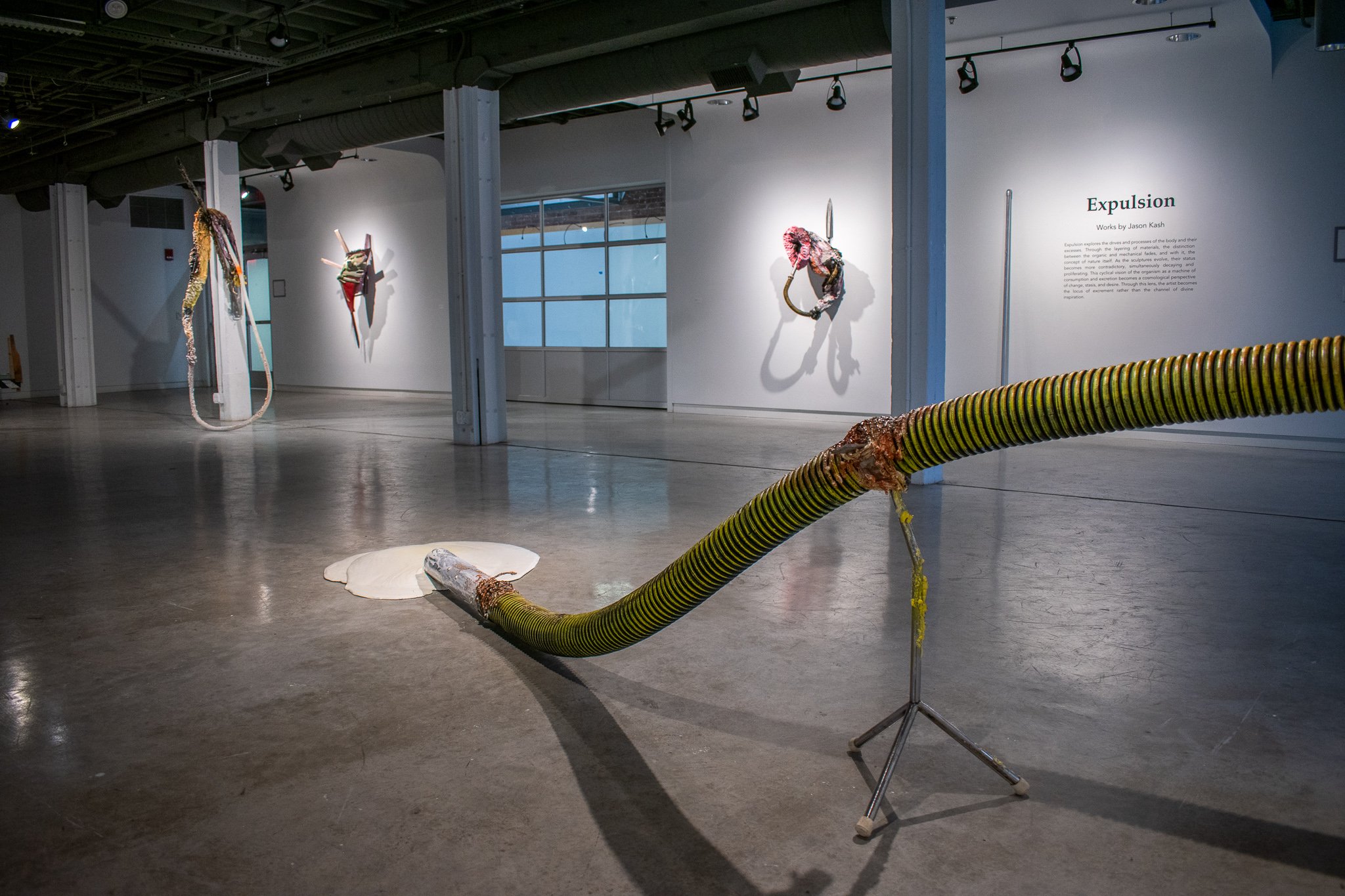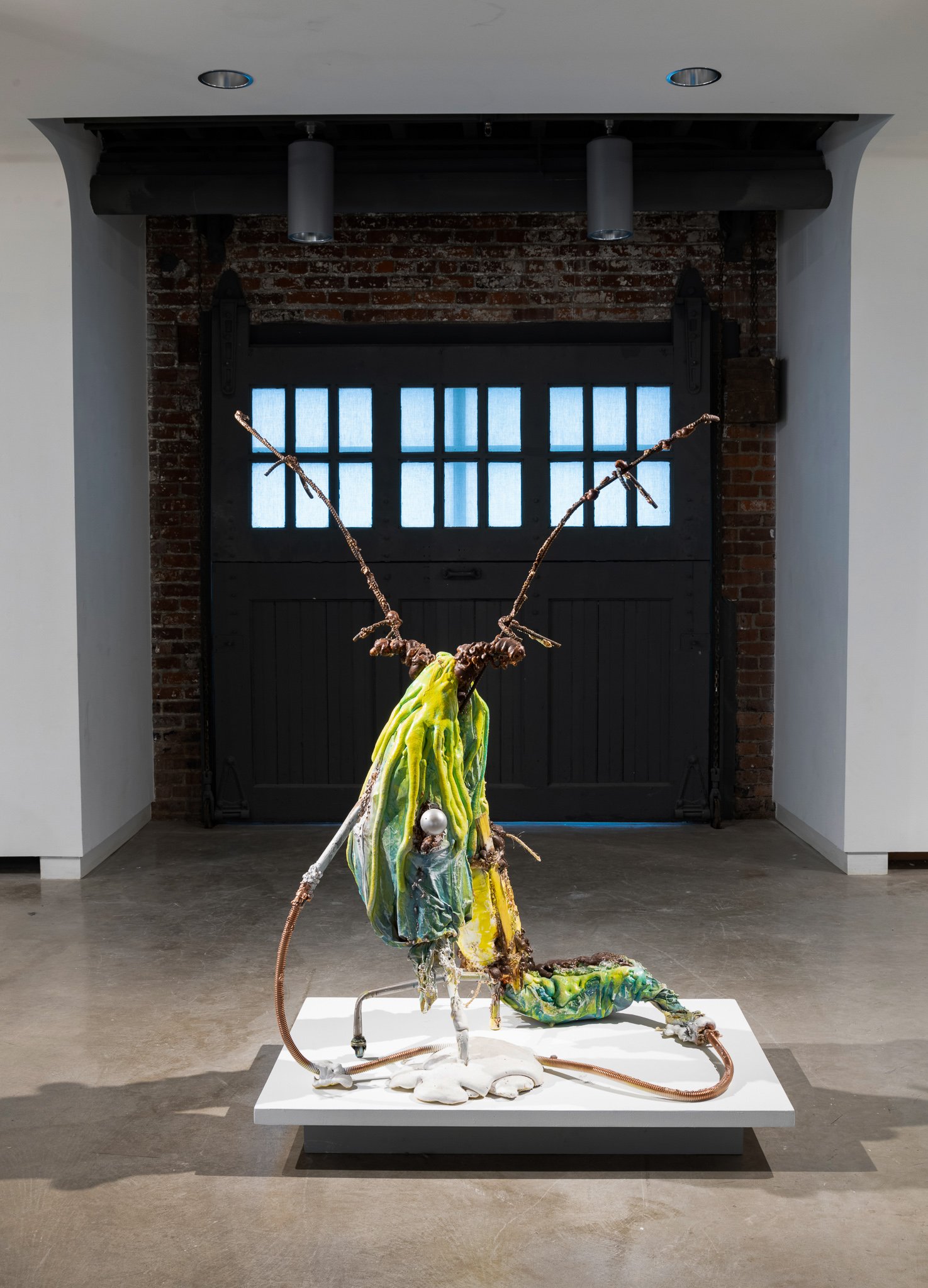Expulsion uses the mechanical processes of the body as a model for exploring broader themes of repetition and transformation. Inspired by Deleuzian assemblage theory and the Freudian concepts of Eros and Thanatos, these “machinic assemblages” are caught between desires for growth and self-destruction. Through the layering of disparate materials, the distinction between the organic and industrial fades, and with it, the concept of nature itself. As the sculptures evolve, their status becomes more contradictory, simultaneously decaying and proliferating. Prosthetic structures further this tension by both supporting and constraining. Found objects, such as irrigation tubing and car parts, are gerry-rigged for new purposes, forgoing their original functions. Through their scale and integration with the architecture, the sculptures gain autonomy from the viewer and suggest they are part of a larger system. A dialogue emerges between what is contained in these “networks” and what seeps out. Free from a higher function, this excess becomes the potential for the new.
This cyclical vision of the body as a machine of consumption and excretion becomes a cosmological perspective of change, stasis, and desire. Through this lens, the artist becomes the locus of excrement rather than the channel of divine inspiration. Themes emerge around identity, sexuality, and artistic production, and the liberatory power of creativity to reinvent these concepts for our present moment.












